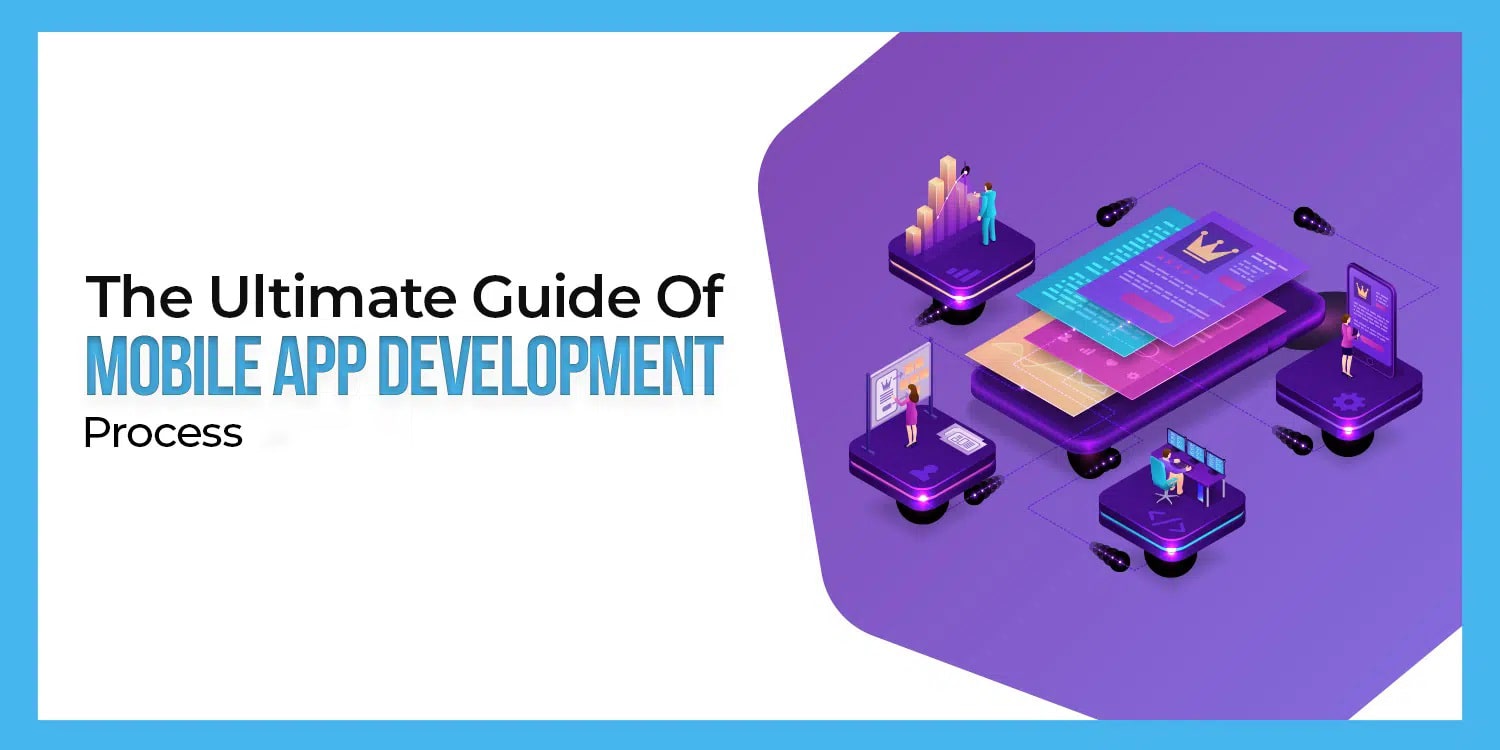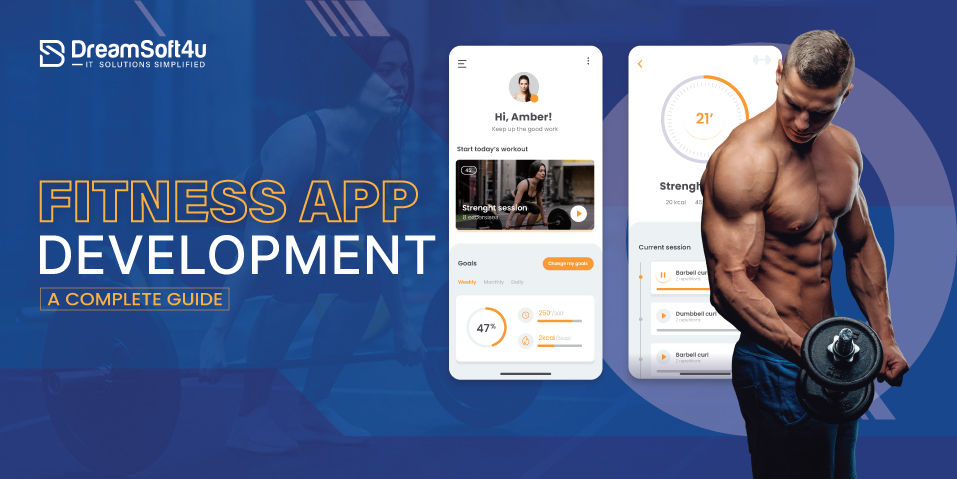Mobile app development is among the most popular methods of creating software and is constantly evolving with the growing popularity of smartphones and tablets. According to Statistics, the annual revenue of the applications has reached 111 billion dollars. In addition, it shows a massive increase in the number of applications available in the Play Store and App Store. In addition, many new trends have been observed in the mobile app development process.
Customers often turn to us to create attractive mobile applications to soothe a fictional group of customers. We like to help customers understand how the app would change the way they earn revenue and get customers.
As the year 2021 draws close, take a look at the space for mobile applications in 2022. In this increasingly competitive digital landscape, innovation must drive application experience and force people to access your application. If you’re unsure how to proceed, here’s an idea for your application’s quick feasibility check.
This article will cover everything about mobile app development, from mobile app development services to mobile app development companies. Before starting the application creation process, we will first review the mobile app development languages and their platforms.
Table of Contents
ToggleWhat Is Mobile App Development?
Mobile application development is the process of developing mobile apps that run on mobile devices. It is a combination of processes and strategies for writing software for mobile devices to define this technically. These applications can be pre-installed or downloaded by the user and installed later.
Mobile application development involves software development based on mobile devices; it seeks to take full advantage of its exclusive features. The mobile app development process helps companies balance costs and functionality.
Mobile App Development Platforms
The two best mobile app development platforms are iOS and Android.
iOS apps run on Apple hardware, and the software is built with Objective C or Swift, which is later deployed in App Stores. On the other hand, Android applications are built on a modified version of the Linux and Java language environment.
- Mobile applications are expected to generate more than $935 billion in revenue by 2023.
- 1.96 million apps are available for download in the Apple App Store.
- 2.87 million apps are available for download in the Google Play store.
- The average smartphone owner uses 10 apps and 30 apps a day and a month respectively.
Mobile applications have become a new norm among people with the increasing use of smartphones and technologies. This shows that the applications market is still looking for big hits in the coming time.
Read Also: Transformative Role of Mobile Apps in Healthcare During Pandemic
Types of Mobile Applications
There are four primary development methodologies to consider when creating mobile applications. They are:
- Native Mobile Applications
- Cross-Platform Native Mobile Applications
- Hybrid Mobile Applications
- Progressive Web Applications
Each methodology has its advantages and disadvantages. Therefore, choose a method that fits your strategy to achieve the desired user experience and create the features for your application.
Native Apps
They are designed for only one platform, written in one programming language for a specific operating system, such as Android or iOS mobile applications. Mobile applications are faster, more reliable, and offer offline functionality because they are designed to run on a specific operating system or platform. Native apps can provide the best runtime performance and have direct access to device APIs.
Web Apps
Web applications are software applications that run on mobile devices and behave similarly to native mobile applications. In contrast, there are important differences between native and web applications. Web applications run in browsers and are usually developed in CSS, HTML5, or JavaScript. The user is directed to the URL and then given the option to install the application. They just bookmark your page. Therefore, they only require a small amount of device memory.
Cross-Platform Apps
A developer can use a variety of mobile app development languages and frameworks to create cross-platform mobile applications. These applications are later compiled into native applications running on the device’s operating system. The most important advantage of cross-platform applications is that they only need to maintain one code base for multiple platforms. This makes it easy to create and maintain a cross-platform application.
Hybrid Mobile Applications
Hybrid applications are bundled as app installation packages and run in a web container. A standard code base between web and mobile applications is one of the advantages of hybrid applications. Some of the world’s leading applications, such as Gmail, Twitter, Amazon, etc., are hybrid applications. Hybrid applications use plugins that allow developers to access the native features of platforms. In addition, they are faster to develop and easy to maintain.
Progressive Web Applications
PWAs are web applications that use a set of browser features to provide an application-like user experience. These work like native mobile applications, and the same app is available both on the web and on mobile. This means no installation, and PWAs are secure, cheaper, faster, and easier to develop.
With the trend technologies integrated into the mobile application, many changes have occurred in the mobile app development software process. Let us look into this section in detail.
Mobile App Development Process
Even if all the evidence points in favour of application development, it is important to conduct the mobile app development process thoroughly. This will help you understand how your application fits your goals. Choose a path that shapes your vision. Let us dig into the details.
1. Idea
You must have a unique idea, and then it is essential to ask yourself the problems and why nobody else has made an app to solve this problem previously. Once you have complete knowledge of the problem, you will evaluate how a mobile app could solve the problem. You are investing a lot of time and money into the application, so now is the time to challenge the validity and viability of your idea.
2. Strategy
The first step in the best mobile app development platform process is to have an idea, and then we define a strategy if you are looking for successful app development. This step is mandatory, and you must add it to enhance your overall business mobility strategy. The objective of applications varies according to the idea, requirements, features, etc. So, the mobility strategy has application-specific impacts that need to be addressed during the development process.
At this stage, you can:
- Identify application users
- Investigate the competition
- Define application goals and objectives
- Select a mobile platform for your application
3. Analysis and Planning
This stage showcases how your idea will be converted and become a reality. The analysis and planning step help in identifying detailed functional requirements.
After identifying the application requirements:
- You must create a product action plan which includes prioritizing mobile application requirements and providing delivery milestones accordingly.
- Ensure to define your Minimum Viable Product (MVP) if time, resources, or costs are concerned.
- Don’t forget to prioritize it when you first bring it to market.
In this step, you must identify the skills that are required to develop your applications. Your mobile development team should include iOS and Android developers if you want a mobile app for iOS and Android mobile platforms.
4. UI/UX Design
It’s not about what features your app offers; it’s about what it looks like and how it interacts with users. While a critical element of your mobile app is the problem it solves, the user-friendly and straightforward management of its features makes the mobile app attractive to your customers. The app’s functionality is useless if users can’t implement it in real life and choose another mobile app or provide hateful feedback. They usually do both.
The user interface (UI) refers to how your mobile application presents itself to the user. User Experience (UX) refers to how a user interacts with and gives commands to an application to perform or solve problems for which the application was initially developed.
Make sure that your app follows the mentioned-below four basic rules.
- It’s intuitive
- It’s simple
- It’s engaging
- It does what it says it will
When implementing trendy mobile app design, make sure that it looks beautiful and interacts with the user, and make the initial use of the app fast, convenient, and cost-effective.
5. App Development
After meeting the design of the applications, the developers of mobile applications will start to implement everything. The project manager defines tasks for developers and develops application development step by step to achieve the set milestones.
Planning remains an important step in this mobile app development process. Before starting the actual development, you must define the technical architecture, choose the technology, and define development milestones.
We value your time and money, so every idea, proposal, or decision will be discussed with you. Going through the mobile app development process stages gives you an overview of the screens of the developed applications through project management tools such as Basecamp and Trello.
| Technologies | Android | iOS | Backend |
| Programming language | Java, Kotlin | Swift, Objective C | PHP, RoR, Node js, Angular Js, React Js, GOLang, .Net |
| IDE | Android Studio | XCode | NA |
| Database | SQLite, Realm | SQLite, Realm, CoreData | NA |
| Tools | Android SDK, Android NDK | NA | NA |
6. Q/A testing
Before launching the app, it is important to go through the Quality Assurance testing process. If you decide to create an application, it is essential to test the application. This will help keep costs low and create a quality application. The further you enter the mobile application development cycle, the more costly it becomes to fix the error.
Performing quality assurance testing during the mobile app development process makes applications 100% error-free. Don’t forget to prepare test cases that will include all the aspects of the app texting. This will help in ensuring comprehensive application quality control testing.
Test cases are designed to:
- perform test operations
- save test results from evaluating software quality
- track fixes for re-testing.
If you want the best results, you must include your quality assurance team in the analysis and design phases. Knowing the functional requirements and goals of the application will ease the task of the Q/A team to create actual test cases.
When developing mobile applications, the app development process involves testing the mobile application by our QA team before the application is released.
After completing the testing and making your application 100% error-free and smooth, we’ll send it to you for UTA (User Acceptance Testing) testing.
7. Deployment & Support
To publish your mobile app, you must submit your app to the App Store and Play Store. However, you need a developer account in the App and Google Play Store before launching the mobile app.
To release the app in the app store, mentioned-below things are required:
- The title of your application
- Description
- Category
- Keywords
- Launch icon
- Apps store screenshots
After you submit to the Apple App Store, iOS apps go through a review process that can take a few days or several weeks. The time depends on the quality of your app and how closely it follows Apple’s iOS development guidelines. If your app requires users to sign in, so for the release process, you’ll have to provide Apple with a test user account.
On the other hand, Android does not have a review process. The app will become available in the app store within a few hours of submission.
Once your application is deployed, our team at DreamSoft4u constantly monitors its usage through mobile analytics platforms and measures the success of your application. We also check for crash reports or other user-reported issues.
Encourage users to give your business feedback and suggestions about your app. Fast end-user support and frequent application improvements are critical to maintaining user engagement. Unlike web apps, where patch releases are immediately available to app users, mobile app updates face the same initial submission for submission and review process. In addition, you need to keep up to date with technological developments in your mobile applications and regularly update your application for new mobile devices and operating system platforms.
How Much Does It Cost To Develop An App?
The cost of developing mobile applications depends on whether to develop them in-house or hire an app development agency.
If you decide to create an in-house team, it will require additional costs, such as office space, hardware, and software requirements.
On the other hand, if you decide to hire a mobile app development company, you can enjoy many advantages and save additional costs. These include the location, experience, and size of the agency. It also consists of the complexity of your application and the scalability of the back end.
In 2021, investors received applications based on their budget. It was $5,000, $50,000 or $500,000. They were based on demand and application complexity. Application development costs depend on your needs and the complexity of the application.
How Much Time Does It Take to Create an App?
Again, the time it takes to build an application depends on the project’s type, complexity, features, and functions. Let us look into the time taken to develop a mobile app according to the complexity.
- A basic or standard app takes 200-800 development hours, and the development time would be about 3-6 months.
- A semi-complex app takes about 800-1200 hours with a 5-9 month development schedule.
- A very complex application would take more than 1,200 hours with a development schedule of more than 9 months.
Top Factors Impacting the App Development Cost
Yes, development hours and cost depend entirely on factors. It contains;
- Application type and its complexity
- The platform you choose to create the application
- Your chosen development method
- Number of functions and their complexity
- UI / UX and its complexity
- Development partner
Clear Pricing, Fast & Focused, Quality You Can Trust
Top-notch Mobile App Development Services at Budget-friendly Prices
Conclusion
The mobile app development process gives you a crystal clear idea of moving forward with your desires. Also, the cost of developing a mobile application depends on the idea and the time frame required to complete it. This comprehensive guide will serve all your purposes if you plan to develop mobile applications.
Developing mobile applications is an important step for any business as the demand for efficient, user-friendly, and high-performance mobile applications is expected to grow significantly. This is due to the number, variety, and complexity of mobile devices currently on the market increasing.
When you’re ready to create your own application experience for your business, it’s always a good idea to enlist the help of experts who can shorten the time to reach your market. At DreamSoft4u, we support companies of all shapes and sizes as a springboard for their development and help them achieve valuable ROI in record time. Book an appointment with us to start your application development journey today!
FAQ’S
Q. Do you offer a quote or cost analysis to potential clients?
Team size varies based on project complexity. Some projects like an HR payroll solution need a team size of 6-8 members. However, a more complex project like a mobile ERP solution needs a larger team- a team size of around 10-15 members. We recommend you discuss your project needs with your development partner and then decide.
Q. Do you offer a quote or cost analysis to potential clients?
Yes, we offer quotes and cost analysis tailored to the specific requirements of potential clients. Please reach out to discuss your project details and receive a personalised quote.
Q. Can you share some case studies of your previous projects?
We have a portfolio of case studies showcasing our previous projects. Please let us know your requirements, and we can share relevant case studies. We would also suggest you visit our LinkedIn page where we consistently share previous case studies, project analysis reports, etc.
Q. Can you give me an estimate of the time required to build a business mobile app?
The time required to build a business mobile app depends on various factors such as features, complexity, platforms, and integration needs. Typically, a simple app can take a few months, while more complex projects may take longer.
Q. Can I hire developers, designers, or other experts as per my ongoing project needs?
Yes, we provide staff augmentation services with flexible hourly, monthly, and weekly retainers to meet your ongoing mobile app project requirements.











